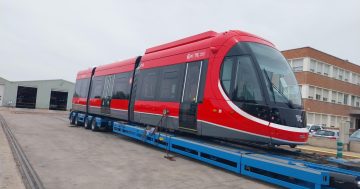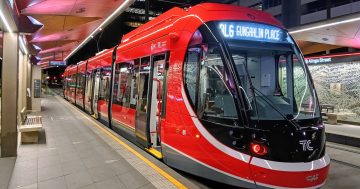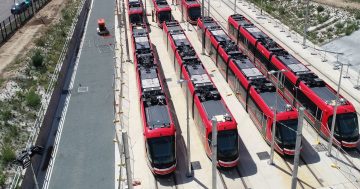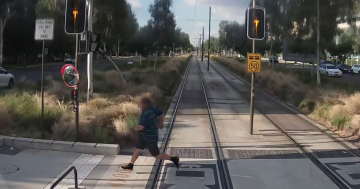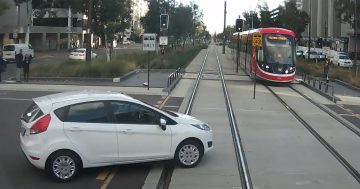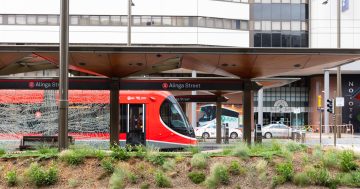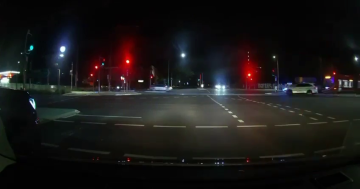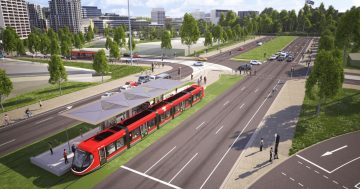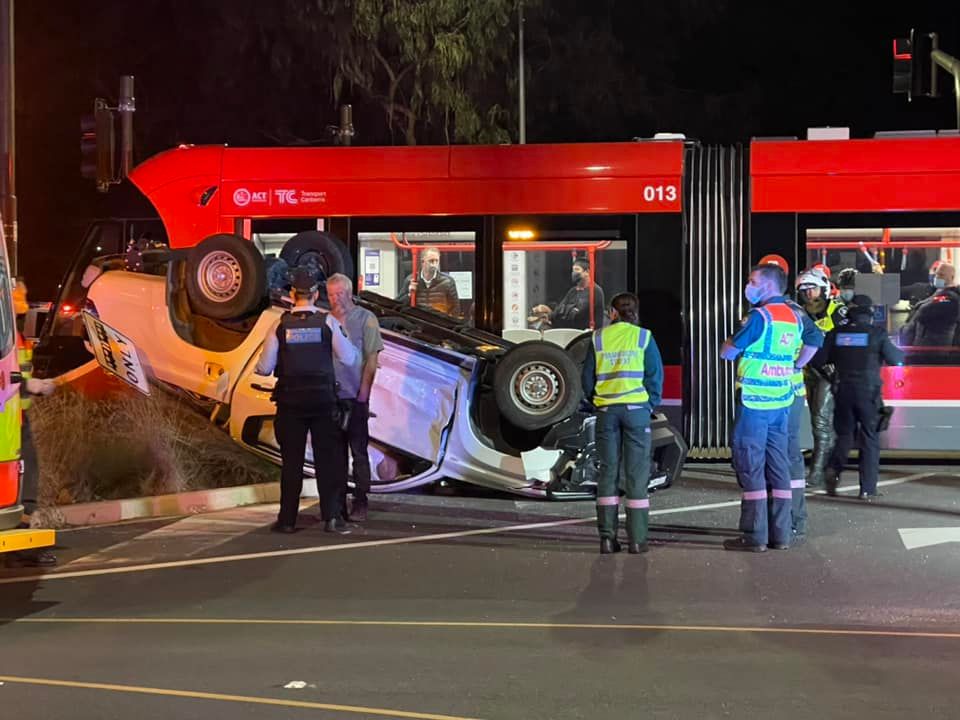
A car and a Light Rail Vehicle collided on 7 July 2022. This has been the most common form of incident and an area safety measures should focus on, the Monash University report says. Photo: John Mikita.
Drivers running red lights and pedestrians crossing against red signals and at inappropriate places have been behind most Canberra light rail incidents since the line opened in 2019.
A new study from Monash University has found light rail to be a well-designed and safe means of transportation and the public perceives it to be safe, and the level of risky behaviour is low.
But it warns against complacency and recommends a mix of countermeasures, education and enforcement to make the network even safer, especially when it is to be extended in the coming years, will carry more passengers and have more interaction with traffic.
The study looked at the four years from April 2019 to May 2023, in which there were only 18 incidents. It does not discuss near misses.
Twelve accidents (67%) involved a motor vehicle and six (33%) a pedestrian or cyclist.
In 10 of the motor vehicle incidents, a red light was disobeyed, with drivers generally making right-hand turns and proceeding into the path of a Light Rail Vehicle, either colliding with the side of an LRV or a Light Rail Vehicle colliding with the side of the motor vehicle.
The study says traffic lights for vehicles and LRVs should be kept well apart, more time allowed for lights to change, warning signs installed, raised platforms should be added on approach to high-risk intersections and lower speed limits mandated for motor vehicles.
“Flashing warning lights that are integrated into signs and activated when a Light Rail Vehicle is approaching the intersection could also be considered to warn motor vehicle drivers of the approaching danger and provide them with ample time to stop,” the study says.
Pedestrians also disobeyed red lights at crossings, and a site inspection found undesignated rail crossings marked by trampled vegetation, marking out unofficial trails.
The study suggests pedestrian signals should be embedded into the pavement to prevent pedestrians from crossing against red signals and installing extra controlled crossing points.
It also says low walls or other barriers near garden beds near stops could discourage crossing, particularly at risky locations.
The study found that ACT light rail safety campaigns were well recognised by the public and recommended they continue.
An online survey found 70.7 per cent of respondents reported they were aware of a Light Rail safety campaign.
Respondents were also positive towards the adequacy of light rail infrastructure, with 84.6 per cent saying road signs are adequate, 77 per cent that road markings are adequate, 76.3 per cent that street lighting is adequate and 73.3 per cent that the external lights on Light Rail Vehicles are adequate.
They were also asked about risky behaviour, including motor vehicles, motorcycles, bikes, scooters, skateboards or rollerblades travelling along the tracks; vehicles or motorcycles failing to give way to LRVs or speeding near them; and LRVs speeding.
High numbers said they had never seen such behaviour, although only 33.9 per cent said they had never seen motor vehicles or motorcycles travelling at unsafe speeds when near LRVs.












